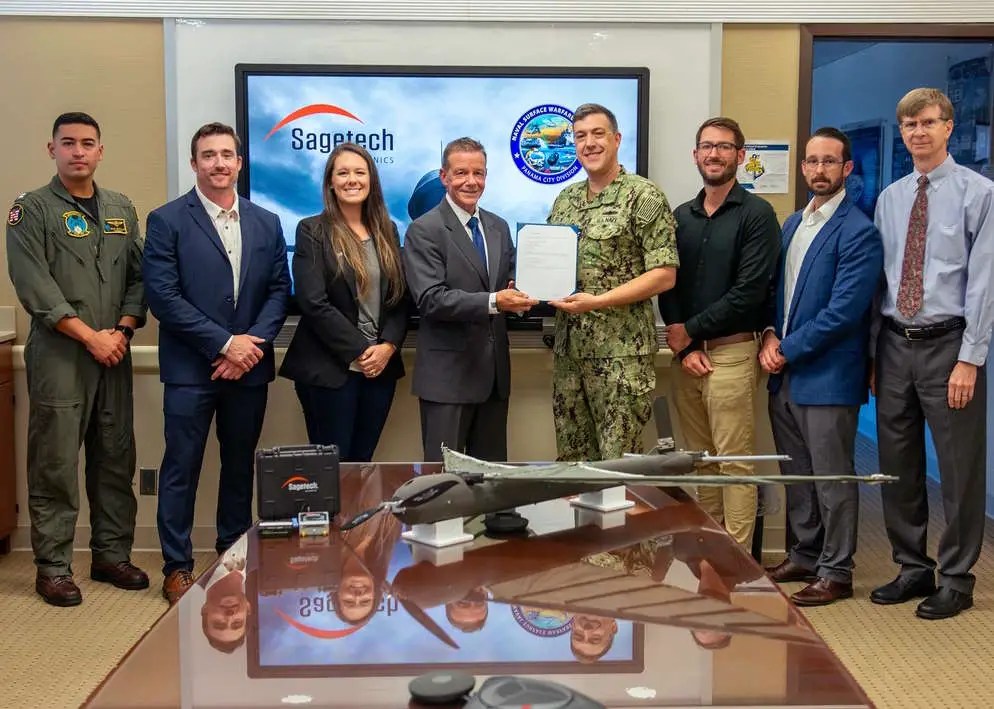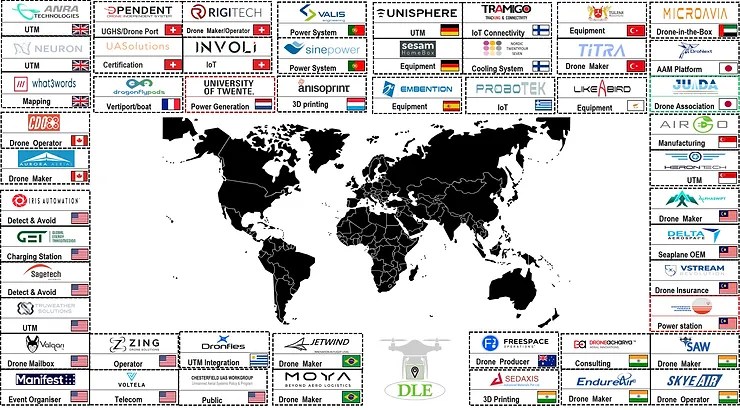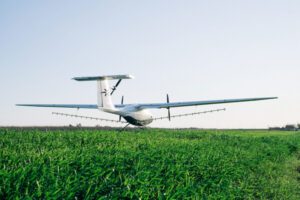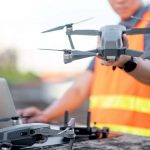Are you ready to experience the thrill of flying at breakneck speeds and maneuvering through tight spaces like a pro? If you’re a drone enthusiast looking for the next big thing, you don’t want to miss out on the excitement of FPV Racing Drone of first-person-view
These drones are built for one thing and one thing only – speed! With their lightning-fast agility and ability to navigate through obstacles, FPV racing drones are taking the drone world by storm.
In this article, we’ll take you on an adrenaline-fueled journey into the world of racing drones, showing you how to use them and why they’re so thrilling for drone racers.
So buckle up, grab your goggles, and get ready to fly!
What are Racing Drones?
Racing drones are small, lightweight drones that are designed for speed and agility. They are equipped with powerful motors, high-performance batteries, and responsive controllers that allow pilots to fly at high speeds and make sharp turns.
These drones are typically built with carbon fiber frames that are both strong and lightweight, allowing them to move quickly and navigate through tight spaces.
Racing drones come in different shapes and sizes, but most are designed to be flown outdoors. Some racing drones are equipped with GPS, while others rely on manual controls for navigation.
Most racing drones have a top speed of around 60-80 mph, although some can go even faster.
How to Use a Racing Drone
If you’re interested in buying a drone for racing, there are a few things you should consider. First, it’s important to choose a drone that is built specifically for racing. There are many different types of drones on the market, but not all of them are suitable for racing.
Look for drones that have a fast top speed, responsive controls, and a durable frame that can withstand crashes.
Once you’ve found the right drone, it’s important to practice flying before you start racing. FPV racing drones require a lot of skill and practice to fly well. It’s a good idea to start by flying in an open field or park, away from obstacles and other people.
As you become more comfortable with your drone, you can start practicing more advanced maneuvers like tight turns and flips.
It’s also important to know the rules and regulations surrounding drone racing in your area. Different countries and regions have different laws regarding drone usage, and it’s important to follow these laws to avoid fines or legal trouble.
Some places have designated areas for drone racing, while others prohibit it entirely.
Components of a Racing Drone
To understand how a racing drone works, it’s important to know its main components. Here are the main parts of a racing drone:
Frame
The frame of a racing drone is usually made of carbon fiber or another lightweight, durable material. The frame holds all the other components of the drone together and protects them from damage.
Motors
The motors of a racing drone are responsible for generating the thrust that propels the drone forward. Racing drones usually have four motors, each with its own propeller.
Electronic Speed Controllers (ESCs)
The electronic speed controllers of a racing drone regulate the speed of the motors. They receive signals from the flight controller and adjust the speed of the motors accordingly.
Flight Controller
The flight controller of a racing drone is like the brain of the drone. It receives signals from the pilot’s controller and sends commands to the ESCs, which adjust the speed of the motors accordingly.
Battery
The battery of a racing drone provides the power needed to fly the drone. Racing drones usually use high-performance lithium-polymer (LiPo) batteries that can provide enough power to fly the drone at high speeds for several minutes.
Camera
The camera of a racing drone is usually mounted on the front of the drone and is used for FPV. Racing drones typically use high-quality cameras that provide a clear, high-resolution image that is transmitted to the pilot’s goggles or screen.
Transmitter and Receiver
The transmitter and receiver of a racing drone are used to send signals between the drone and the pilot’s controller. Racing drones usually use 2.4GHz or 5.8GHz radio frequencies for communication.
Why Racing Drones are So Exciting
For drone racers, flying racing drones is an exhilarating experience. The combination of speed and agility is unmatched by any other type of drone, and the ability to fly through obstacles and around corners at high speeds is a thrilling experience.
Racing drones are also a great way to connect with other drone enthusiasts and compete in organized races and events.
One of the most exciting aspects of racing drones is the ability to use FPV technology. FPV allows pilots to see exactly what the drone sees through a set of goggles or a screen. This gives pilots a sense of immersion and makes flying a racing drone feel like a real-life video game.
Racing drones are also highly customizable, which adds to their appeal. Pilots can modify their drones with different frames, motors, batteries, and other components to optimize performance and customize the look and feel of their drone.
Buying a Racing Drone
If you’re interested in buying a drone for racing, there are a few things you should consider. First, it’s important to choose a drone that is built specifically for racing.
Look for drones that have a fast top speed, responsive controls, and a durable frame that can withstand crashes.
It’s also important to consider the price of the drone. Racing drones can range in price from a few hundred dollars to several thousand dollars. Higher-end drones are usually faster and more responsive, but they also come with a higher price tag.
Another factor to consider is the availability of replacement parts. Racing drones are prone to crashes and collisions, and it’s important to be able to replace broken or damaged parts quickly and easily.
Getting Started with Racing Drones
If you’re new to racing drones, it’s important to start slow and practice as much as possible. Begin by flying your drone in an open area with no obstacles or people around. As you become more comfortable with your drone, you can start practicing more advanced maneuvers like tight turns and flips.
It’s also a good idea to join a local drone racing club or attend organized races and events. This will give you a chance to meet other drone enthusiasts, learn new techniques, and compete in a fun and supportive environment.
Advanced Racing Techniques
Once you’ve mastered the basics of flying a racing drone, there are many advanced techniques you can learn to improve your skills and take your racing game to the next level. Here are some of the most popular advanced racing techniques:
Power Looping
Power looping is a technique that involves flying your drone in a full loop while maintaining your altitude. To perform a power loop, you’ll need to fly your drone forward and then pitch the nose up sharply as you approach the top of the loop.
As you reach the top, you’ll need to roll the drone so that it is inverted and then pitch the nose down to complete the loop.
Diving
Diving is a technique that involves flying your drone in a steep descent towards the ground. To perform a dive, you’ll need to fly your drone forward and then pitch the nose down sharply as you approach the ground.
You’ll need to be careful not to crash into the ground or any obstacles as you perform the dive.
Split-S Maneuver
The split-S maneuver is a technique that involves flying your drone in a 180-degree turn while maintaining your altitude. To perform a split-S, you’ll need to fly your drone forward and then pitch the nose up sharply as you approach the top of the turn.
As you reach the top, you’ll need to roll the drone so that it is inverted and then pitch the nose down to complete the turn.
Barrel Roll
The barrel roll is a technique that involves rolling your drone 360 degrees while maintaining your altitude. To perform a barrel roll, you’ll need to fly your drone forward and then roll the drone to one side or the other. As the drone completes the roll, you’ll need to make small adjustments to maintain your altitude and direction.
These are just a few of the advanced racing techniques that you can learn as you become more experienced with flying racing drones. It’s important to practice these techniques in a safe environment and be patient as you learn.
With practice and persistence, you can become a skilled and confident racing drone pilot.
Racing Drones: Exhilarating and Fun
Racing drones are an exciting innovation in the drone world. These small, lightweight drones are built for speed and agility, allowing pilots to fly through obstacles and around tight corners at incredible speeds.
If you’re interested in buying a drone for racing, be sure to choose a drone that is built specifically for racing and practice flying before you start racing. Flying racing drones is an exhilarating experience that is unmatched by any other type of drone, and the ability to use FPV technology adds a new level of immersion to the experience.
So, what are you waiting for? Get out there and start racing! And if you want to learn more, browse some more articles on our blog or get in touch!





